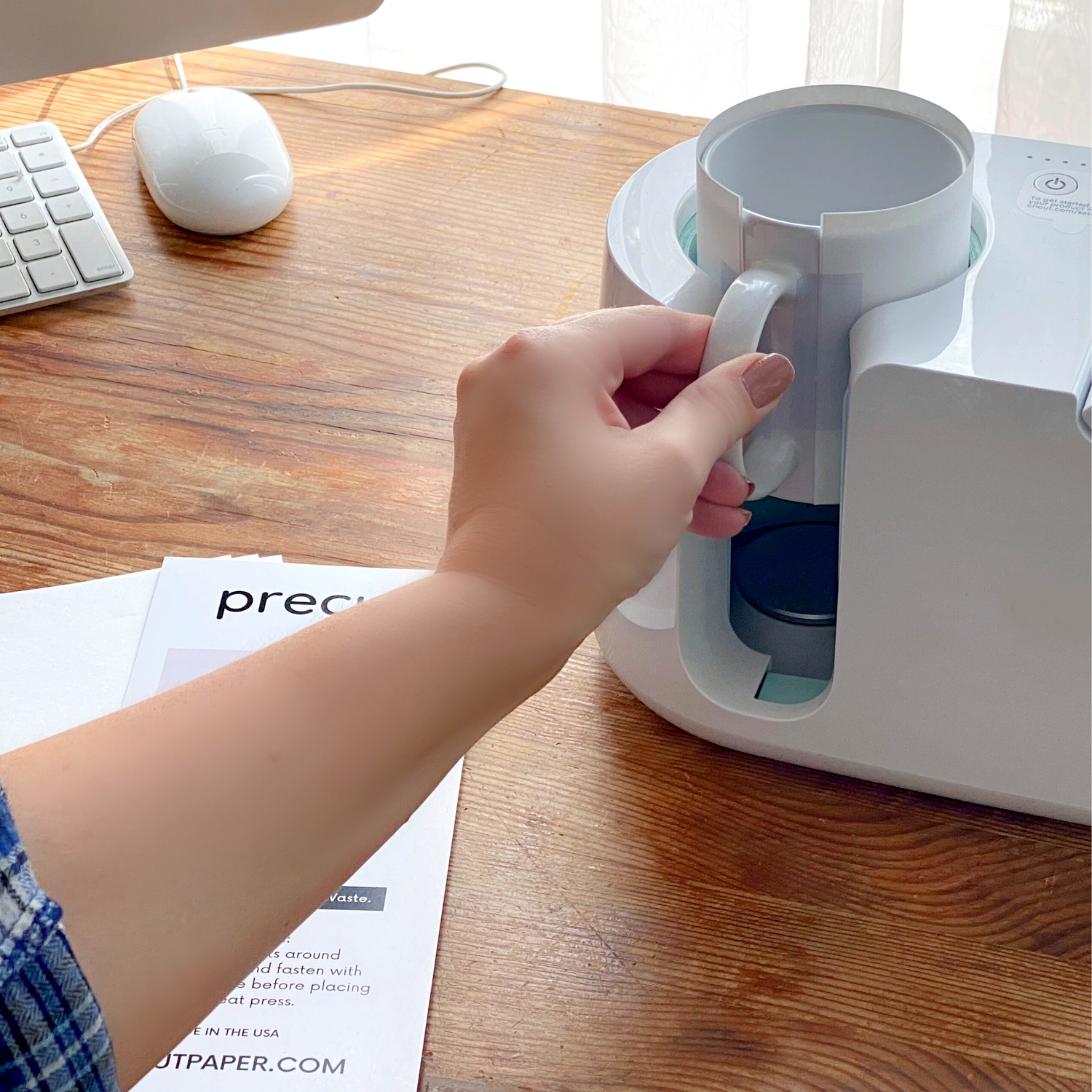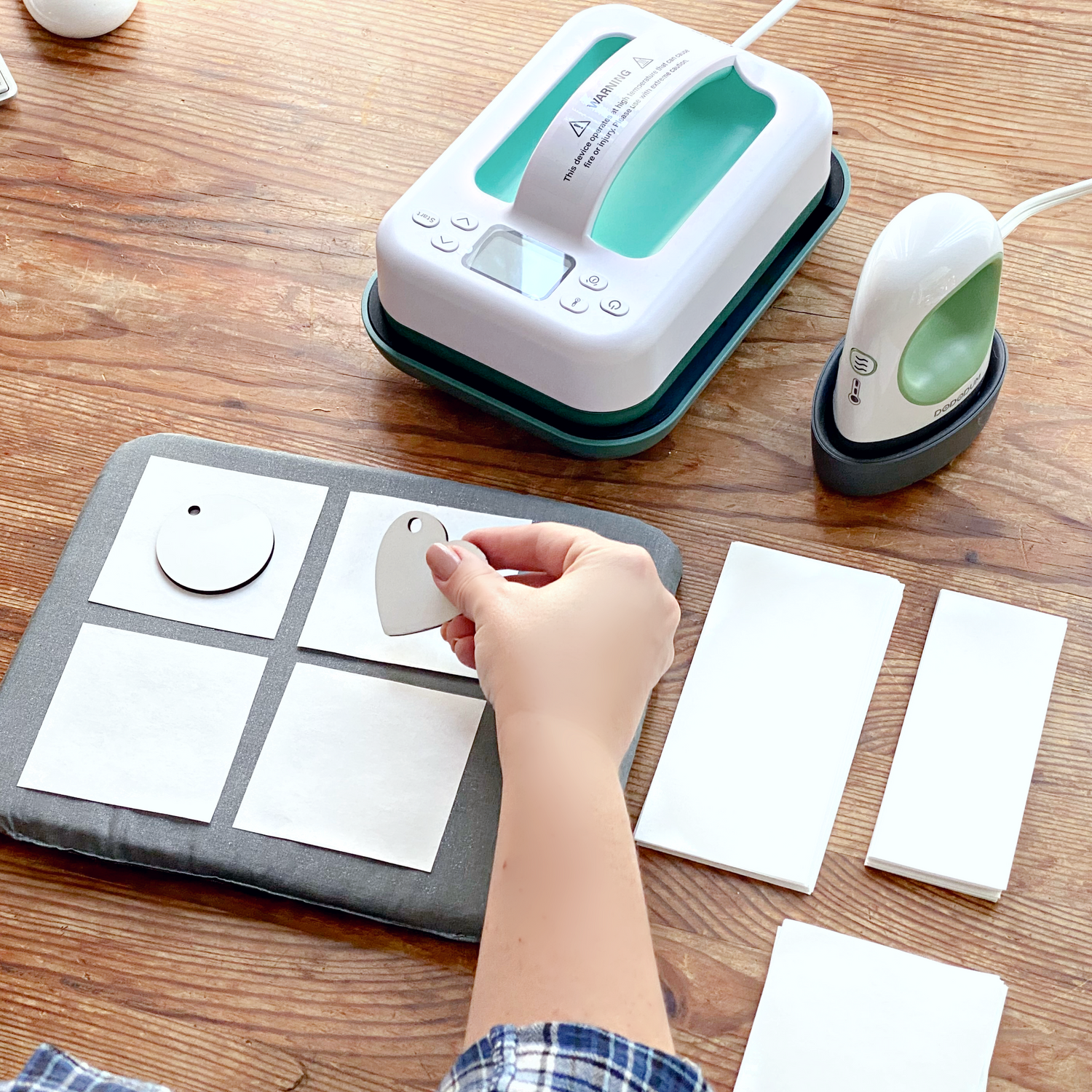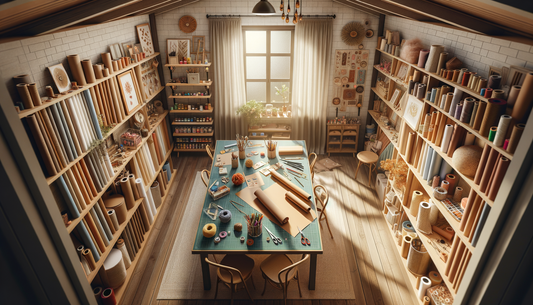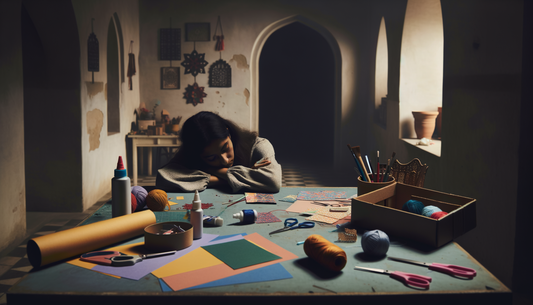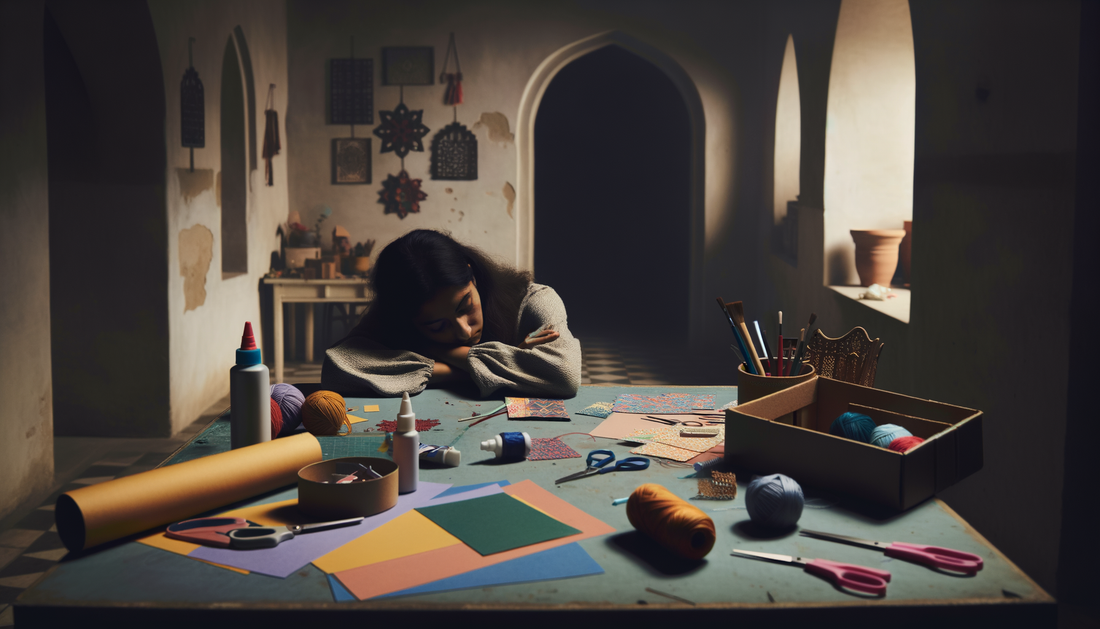
Reclaiming Your Crafting Joy: A Creative's Guide to Staying Inspired
When the sparkle dims and your craft room feels more like a prison than a playground
The Great Craft Room Reality Check
Let's get real for a hot minute. You know those Instagram craft rooms that look like they were designed by Martha Stewart's fairy godmother? The ones with perfect pegboards, color-coordinated supplies, and lighting that would make a photography studio jealous? Yeah, those aren't real life for most of us.
Your "craft room" might actually be:
- A corner of your dining table that you have to clear for every meal
- A plastic tub you drag out from under the bed
- That awkward space between the washer and dryer
- A closet so small you have to back out like you're parallel parking
Plot twist: Some of the most incredible art in history was made in terrible conditions. Van Gogh painted masterpieces in a mental asylum. Frida Kahlo created magic while bedridden. Your kitchen table craft setup is basically a luxury studio in comparison.
When Your Family Thinks Your Hobby is "Cute"
Nothing deflates creative joy quite like well-meaning family members who treat your passion project like finger painting from kindergarten. Here's how to handle the enthusiasm gap:
The "That's Nice, Dear" Syndrome: When someone dismisses your hours of work with a polite smile, remember that not everyone speaks fluent creativity. They might genuinely not understand the difference between your hand-stitched embroidery and something from a big box store – and that's their limitation, not your failure.
Reframe the Audience: Create for the person who will truly appreciate it. Maybe that's your online crafting community, maybe it's your future self, maybe it's that one customer who sends you photos of how they display your work in their home. Quality appreciation beats quantity every time.
The Secret Weapon: Start gifting your crafts strategically. Nothing converts a skeptic like watching their friends rave about the amazing handmade gift they received. Suddenly your "little hobby" becomes "Wow, you're so talented!"
The Craft Fair Graveyard of Dreams
Ah, craft fairs – where optimism goes to die and your bank account gets lighter while your boxes of inventory get heavier. We've all been there: the fair where you sold exactly one item (to your mom), spent $200 on booth fees and supplies, and watched people walk by your beautiful display like it was invisible.
The Truth Bomb: Craft fairs are weird, unpredictable beasts. Success depends on weather, location, the economy, what Netflix show everyone's binge-watching that weekend, and approximately 47 other factors you can't control. A slow day says nothing about your talent and everything about timing and circumstance.
Pivot Your Perspective: Treat craft fairs as expensive market research instead of make-or-break sales events. What did people gravitate toward? What questions did they ask? What price points made them wince versus nod? You're gathering intel, not just selling stuff.
The Long Game: Some of your best customers won't buy on the spot but will remember you later. That person who took your business card and asked lots of questions? They might order something online next month. Plant seeds, don't just harvest.
Breaking Up with Comparison (It's Not You, It's Them)
Social media has turned everyone into a professional photographer with perfect lighting and Marie Kondo organization skills. But here's what you're not seeing in those gorgeous TikTok craft rooms:
- The debt some people go into for those setups
- The hours spent staging and re-staging for content
- The fact that many "crafters" are actually influencers who make more money from affiliate links than actual crafting
- The anxiety and pressure to constantly create content instead of just creating
The Antidote: Follow accounts that show real process, real mess, real failure, and real learning. Unfollow anything that makes you feel worse about your own creative journey. Your feed should inspire you, not demoralize you.
Rediscovering Your Crafting "Why"
When business pressures start suffocating your creativity, it's time for some soul archaeology. Dig back to why you started crafting in the first place:
- Was it the meditative rhythm of repetitive motions?
- The satisfaction of creating something from nothing?
- The problem-solving puzzle of making an idea real?
- The pure joy of playing with colors and textures?
Schedule Joy Sessions: Block out time for crafting with zero pressure to sell, gift, or perfect anything. Make something ugly on purpose. Try a technique you're bad at. Use colors that "don't go together." Remember what play feels like.
The Business vs. Passion Balancing Act
Here's the thing nobody tells you: turning your craft into a business changes it, sometimes in wonderful ways and sometimes in soul-crushing ways. The key is setting boundaries so the business serves your creativity, not the other way around.
Create Two Categories:
- Joy Projects: Things you make purely for the love of making, with no pressure to monetize
- Business Projects: Items designed with market appeal and profit margins in mind
Both are valid and necessary. The joy projects feed your soul and often lead to unexpected innovations. The business projects pay for supplies and validate your skills.
The Permission Slip: You're allowed to make things that will never sell. You're allowed to use expensive materials on practice pieces. You're allowed to spend three hours on a detail that nobody else will notice. This isn't wasteful – it's necessary for your growth and sanity.
Building Your Real Craft Community
Forget the highlight reels and find your people – the ones who understand why you have seventeen different types of scissors and why you save every scrap of pretty paper "just in case."
Online Sanctuaries: Join forums, Facebook groups, or Discord servers where people share works in progress, ask for advice without judgment, and celebrate small wins. The internet is vast enough to hold a community for whatever weird niche thing you're into.
Local Reality: Look for craft groups that actually craft together instead of just talking about crafting. Libraries, community centers, and craft stores often host groups where you can work on projects in companionable silence or bounce ideas off each other.
The Confidence Comeback
When craft fair rejections and family indifference have you questioning everything, remember:
Your Skills Are Real: You can do things with your hands that most people can't. You can see potential in raw materials. You can problem-solve your way through technical challenges. These are genuine skills, regardless of market validation.
Growth is Messy: Every crafter you admire has a graveyard of failed projects, ugly experiments, and "learning experiences" behind them. Your current struggles are just proof that you're pushing your boundaries.
Value Beyond Price Tags: Not everything valuable can be sold. The stress relief you get from crafting, the confidence boost from completing a difficult project, the connection you feel to traditional techniques – these have worth that transcends market economics.
Practical Magic for Tough Days
When you're sitting in your closet craft space, surrounded by supplies that aren't selling, here are some emergency joy restoration techniques:
The Five-Minute Rule: Commit to just five minutes of crafting with no goal beyond moving your hands. Often, five minutes turns into an hour of flow state.
Technique Tourism: Try a completely different craft for a day. If you're a jewelry maker, try watercolors. If you're a quilter, try polymer clay. Fresh techniques can reignite your passion for your main craft.
Process Documentation: Instead of focusing on the finished product, document your process. Take photos of your hands working, your workspace, your problem-solving moments. Sometimes shifting from outcome-focused to process-focused changes everything.
The Gratitude Inventory: Make a list of everything your crafting has given you beyond money – skills learned, stress relieved, friends made, problems solved, gifts created, meditative moments experienced.
Your Craft Space is Perfect
Whether you're crafting on a TV tray, in a converted closet, or at a kitchen table you have to clear three times a day, your space is exactly what you need right now. Some of the world's most beautiful art has been created in less-than-ideal conditions. Your creativity doesn't need perfect circumstances – it needs you to show up and make something, anything, with love and intention.
The TikTok craft rooms are lovely, but they're just rooms. The magic happens in your hands, your heart, and your willingness to keep creating even when the world doesn't seem to be paying attention.
Your crafts matter. Your creativity matters. And yes, even that wonky first attempt at a new technique matters. Keep making things. The world needs what you create, even if it doesn't always know how to tell you so.
Now go make something beautiful, imperfect, and completely yours.


